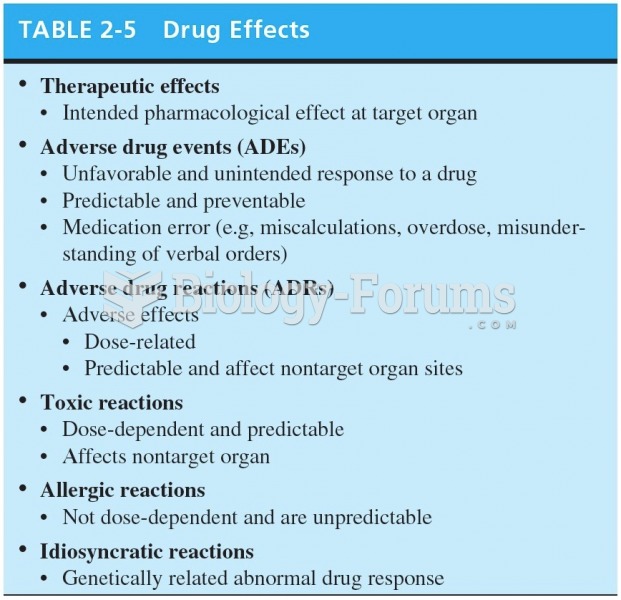Answer to Question 1
Correct Answer: 2
Rationale 1: Side effects of drugs are predictable.
Rationale 2: Idiosyncratic drug reactions are those that are unexpected or unexplained.
Rationale 3: Some adverse effects can be irreversible; this is not a characteristic of idiosyncratic reactions.
Rationale 4: Some adverse effects can be life threatening, but they are not considered to be idiosyncratic.
Global Rationale: Idiosyncratic drug reactions are those that are unexpected or unexplained. Side effects of drugs are predictable. Some adverse effects can be irreversible; this is not a characteristic of idiosyncratic reactions. Some adverse effects can be life threatening, but they are not considered to be idiosyncratic.
Answer to Question 2
Correct Answer: 1
Rationale 1: The pregnancy risk category of a drug gauges the risk of birth defects or teratogenic effects.
Rationale 2: Although most drugs have more detrimental effects in the first trimester, they can have teratogenic effects throughout the pregnancy.
Rationale 3: This statement does not answer the client's question. The client could be asking about an over-the-counter drug as well.
Rationale 4: Although it is best to limit the amount of drugs taken during pregnancy, there are some drugs that are safe to take when pregnant and that do not have teratogenic effects.
Global Rationale: The pregnancy risk category of a drug gauges the risk of birth defects or teratogenic effects. Although most drugs have more detrimental effects in the first trimester, they can have teratogenic effects throughout the pregnancy. Telling the client that the health care provider ordered the medication and, therefore, it should be okay does not answer the client's question. The client could be asking about an over-the-counter drug as well. Although it is best to limit the amount of drugs taken during pregnancy, there are some drugs that are safe to take when pregnant and that do not have teratogenic effects.







